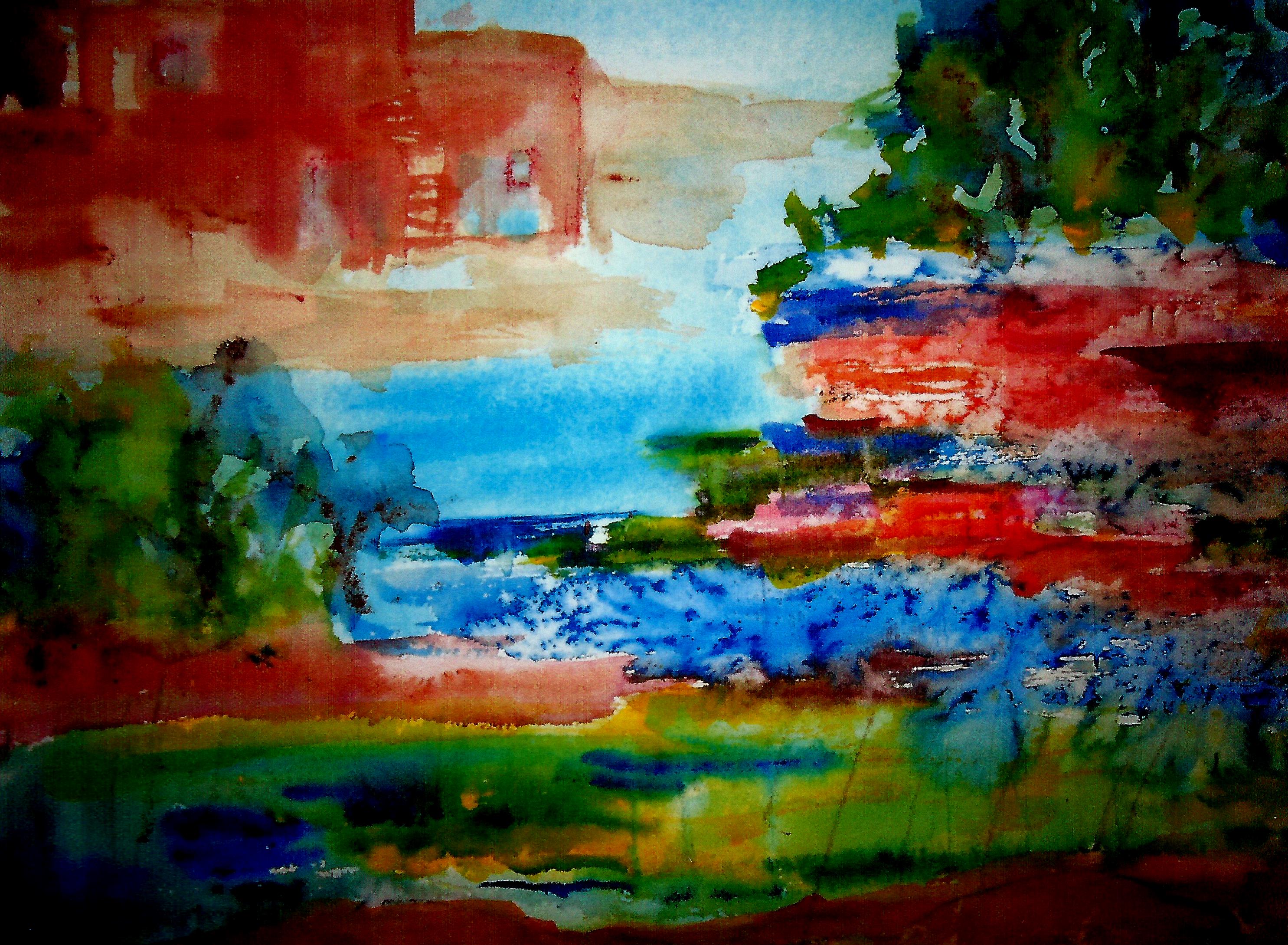
Memories of Manitou Springs, Colorado
We have nearly made it through another Wisconsin winter. Not a rough one, simply a bit long!
I began the new year with a passion for creating texture in my art. The above was one of the first renderings of 2020. It hangs over our piano, beneath a huge painting of rugged cowboys rescuing cattle in a crevasse—a treasure which I found at a thrift store years ago for little more than the proverbial song.
The mountains in my (16″ x 20″) “Memories . . . .” were formed with heavy modeling paste on YUPO paper which is not really paper; it is a kind of plastic with a slick, shiny surface.*
Then I added—almost dripped—the paints in various spots, jiggled the YUPO around, made a “cuppa Joe” in our beloved Keurig, and sat down to spin beautiful silk and merino yarn on one of my two Jensen spinning wheels. (Fibers—as in spinning and knitting—are another of my many passions.)
I love just letting the surface and paint do the work, with very little interference from “moi”. The results are frequently more delightful than products of obsessive meddling with brushes.
But I do use brushes also, and they can do wonderful things, especially with florals. I begin with watercolor, paint the flowers, and then add the background.** When this dries, I go back in with GOUACHE.
The gouache builds texture and dimension similar to the effect of oil paints. Sometimes I get carried away and the textures are layered so deeply that I spray the finished painting with an acrylic fixative, as the chalky gouache is otherwise apt to crack and flake away over the years.
Probably that would not happen to paintings immediately secured under glass, but the majority of my renderings live in protective plastc sleeves until switched around with framed works, given away as a gift, or (once in awhile) sold. When I paint on gallerywrap canvas panels, I always spray with a fixative because these are never framed.
Below is an example of a floral done with watercolor and many layered gouache accents.

Again and again, I paint flowers. I think of flowers day and night. Soon we will actually see them, springing from the ground! 🙂
Margaret L. Been — March 19, 2020
* Artists either love or hate YUPO. Often the “haters” are the purists who seek detailed perfection. I do not care for detailed perfection, so I am in the group that LOVES YUPO. Good thing I don’t hanker after perfection; I am incapable of achieving it !!!
**Watercolor rules (which I am very fond of breaking) dictate BACKGROUND FIRST. I normally do BACKGROUND LAST, having been greatly inspired and influenced by fine artist Barbara Nechis who usually paints the background last, because until her piece is finished she doesn’t know what kind of a background she wants.
Good reasoning! The color of the background is most compelling when chosen from colors in the completed subject. Seeing is deciding! Plus, it is so beautiful when damp background colors subtly phase into the body of the painting—either a still life or landscape.


































